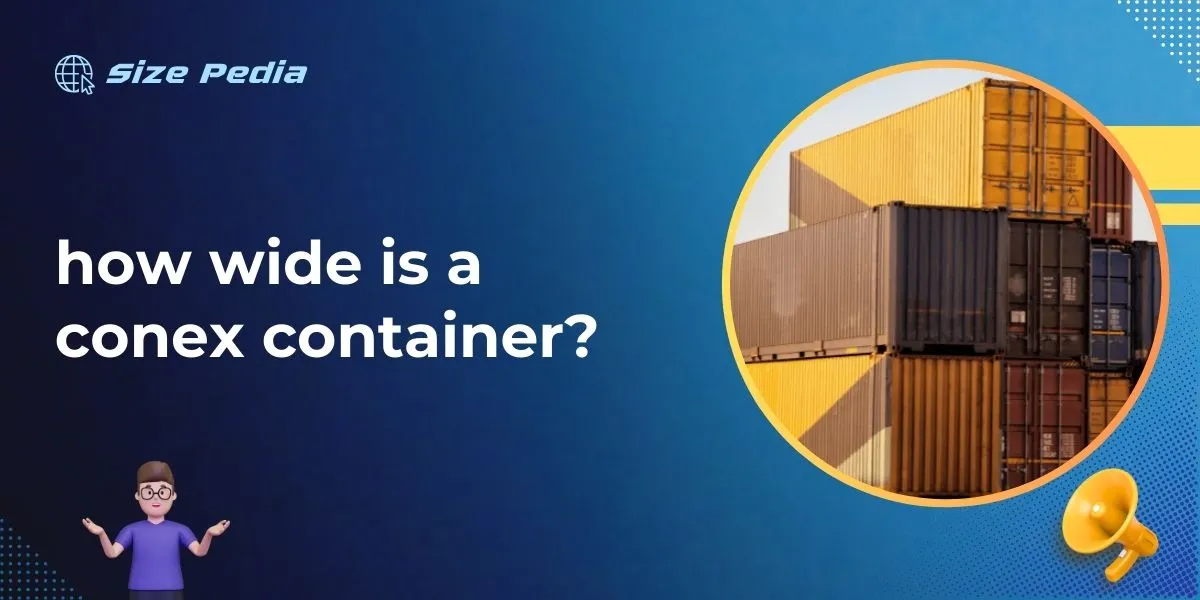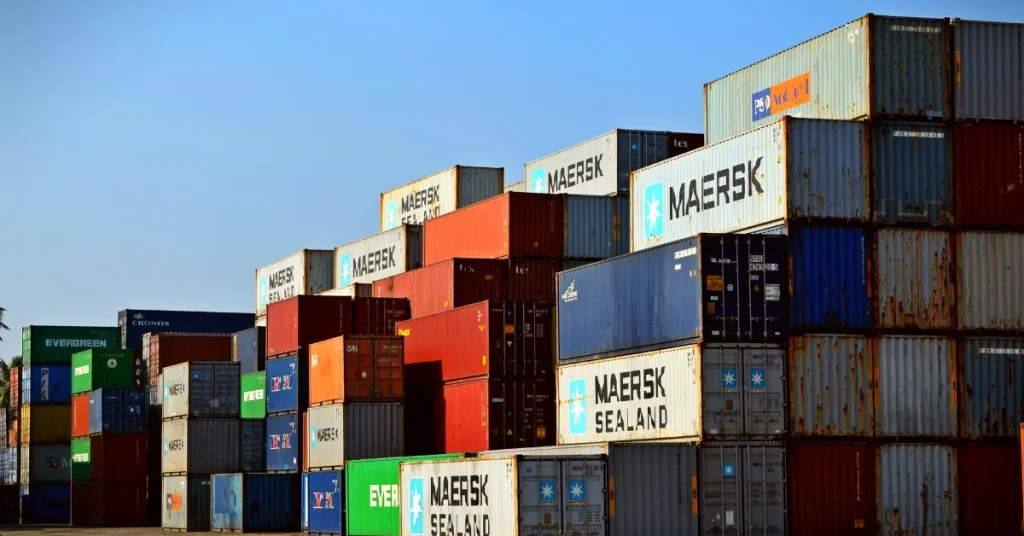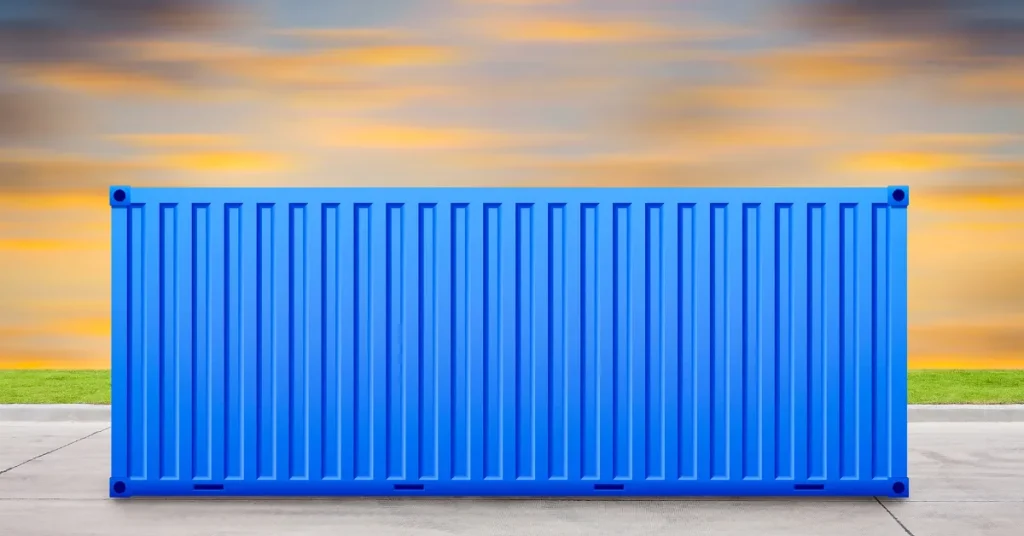A standard Conex container is 8 feet wide. The width is consistent across various lengths of Conex containers.
Conex containers, widely recognized for their strength and versatility, are fundamental to global trade.
They facilitate the transportation of goods by providing a standardized dimension for shipping cargo efficiently. These robust steel boxes are also popular in various industries for storage and have even found their way into creative architectural designs.
Originating from the shipping world, Conex containers, often referred to as shipping or cargo containers, offer a durable and secure solution for transferring merchandise over long distances.
Their uniform width ensures they fit seamlessly on cargo ships, trucks, and trains, optimizing the logistics process. By maintaining a standard width, Conex containers have revolutionized how goods are moved, stored, and handled worldwide.

Conex Containers: An Introduction
Conex containers are large steel boxes used for storage and transport. They are strong and come in standard sizes. People use them to move goods around the world. They are also known as shipping, cargo, or sea containers.
The Origins Of Conex Containers
The first Conex containers appeared in the 1950s. The US Army needed an efficient way to move supplies. They designed these containers to be easy to load onto ships and trucks. Conex stands for “Container Express,” which reflects the speed and ease of moving goods.
Versatile Uses In The Modern Era
Today, people use Conex containers for many things, not just shipping.
They are popular for storage and as workspaces.
People also turn them into homes and shops. The strong steel walls keep things safe inside.
- Onsite storage at construction sites
- Portable offices on the go
- Creative living spaces
- Pop-up retail stores
Standard Dimensions Unveiled
Understanding the size of a Conex container is critical for planning space and logistics. Standard dimensions make it simple to fit these containers in different spaces. Let’s explore the common sizes and how to measure these versatile units.
Common Conex Container Sizes
Conex containers come in various dimensions to cater to diverse needs. These predefined sizes ensure they fit perfectly on trailers, rail cars, and cargo ships. Below are the most popular Conex container sizes.
- 10-foot containers: Compact and ideal for tight spaces
- 20-foot containers: Standard choice for a wide range of uses
- 40-foot containers: Perfect for large storage and transportation needs
| Container Size | Length | Width | Height |
| 10-foot | 10′ | 8′ | 8′ 6″ |
| 20-foot | 20′ | 8′ | 8′ 6″ |
| 40-foot | 40′ | 8′ | 8′ 6″ |
Measuring Interior And Exterior
Accurate measurement is key to utilizing your Conex container. To measure the exterior, include the container’s longest points. For interior measurements, assess the space available for cargo or storage. Use these steps for precise dimensions.
- Measure the length from the interior panel to the opposite end.
- Width is from one interior sidewall to the other.
- Height is from the interior floor to the ceiling.
Note that the door aperture, or opening, can affect loading as well. Verify the door size separately to ensure your items will fit through.
Custom Sizes For Conex Containers

Conex containers offer flexible storage solutions. Standard models have set dimensions. Yet, unique demands call for custom sizes. Container modifications create tailored spaces. This caters to diverse storage or workspace requirements.
Tailoring For Specific Needs
Custom container options adapt to user needs. They range from minor adjustments to full conversions. Features such as doors, windows, and insulation suit various functions.
Workshops, offices, or pop-up shops are possible with the right modifications. Expert fabricators cut, frame, and reinforce Conex containers for any purpose.
- Extended lengths – Joining units for more space.
- Reduced sizes – Cutting down for tight spots.
- Interior build-outs – Shelving, desks, and more for functionality.
Impact On Load Capacity And Space
| Modification | Space Added or Reduced | Load Capacity Change |
| Length extension (10ft added) | +80 sq ft | Slight decrease |
| Width expansion (2ft wider) | +40 sq ft | No significant change |
| Height increase (1ft higher) | +8 sq ft (per 10ft length) | No impact |
Modifying a Conex container changes its capacity. Creating new sizes affects volume and weight limits. Expert modification ensures structural integrity remains intact. Additions like shelving or partitions may reduce usable space but enhance organization.
Every alteration has a purpose. The right changes make a conex container fit for any task. It is essential to balance the need for space with the desired load capacity.
Navigating Zoning And Building Codes
Navigating zoning and building codes needs special attention when considering the use of a Conex container. Often used for storage, offices, or even homes, understanding the legal requirements is crucial.
Conex containers offer a versatile space solution. But before setting one on your property, you should know the rules that apply.
Restrictions On Container Size
Many local governments have specific restrictions on the size of structures that can be placed on a property. Container width often falls under these rules. A standard Conex container is typically eight feet wide.
However, wide sizes might vary. There are also ‘high cube’ models available, measuring a foot taller than standard ones. Before bringing a container to your site, check your local zoning regulations to avoid costly mistakes.
- Standard width: 8 feet
- Extra-wide options available
- Height options: Regular and high cube variants
Permits And Compliance For Container Use
Familiarizing yourself with permit requirements is a must. Most local governments need a building permit for Conex containers. This is true especially if used for habitation or commercial purposes.
Permit applications should detail the container’s purpose, size, and location on your property. Municipalities require that your container meets building safety codes.
This will ensure it is safe for use. In some areas, there may be additional codes related to the container’s appearance, to maintain neighborhood aesthetics.
| Use Case | Permit Needed | Additional Compliance |
| Storage | Maybe | Size and location restrictions |
| Office Space | Yes | Safety and accessibility codes |
| Residence | Yes | Building, safety, and aesthetic codes |
Always consult with your local planning office. They provide valuable guidance for your Conex container project. Adhering to these rules will make your container setup a smooth process.
Transportation And Handling Of Conex Boxes
Conex containers, also known as shipping containers,
play a crucial role in global commerce. Their robust design allows for
the safe transport of a wide range of goods.
Yet, moving these substantial
steel boxes requires careful planning. Adequate equipment and knowledge
of their dimensions are key to smooth handling.
Logistical Challenges Based On Size
The standard width of a Conex container is 8 feet. This consistency is vital for optimizing space on ships, trains, and trucks. Depending on the length, which varies, the handling challenges can change.
- Twenty-foot containers: These are easier to maneuver in tight spaces.
- Forty-foot containers: Require more space and careful route planning.
Other factors include:
- Weight distribution
- Clearance for safe transit
- Permits for heavy loads
Equipment Needed For Different Container Widths
Different widths of Conex boxes necessitate specialized handling equipment.
| Container Width | Handling Equipment |
| 8 feet | Forklifts, cranes, and chassis |
| Extra-Wide Options | Customized rigs and lifting gear |
Smaller forklifts may be sufficient for lighter, smaller containers.
Larger ones often require cranes with significant lifting capacity.
Innovative Designs And Conex Trends

Innovative designs and trends are reshaping Conex containers. Traditionally, these steel boxes served for storage and transport.
Now, they take center stage in architecture and design. With imagination, containers become homes, offices, and shops. Let’s explore how flexibility in width is a game changer.
Expanding Beyond Standard Widths
Standard Conex containers usually measure 8 feet wide. But creative minds don’t like limits. That’s why we see new trends. Containers can expand. They can merge. These changes create more space. This space can fit any need.
| Type | Width |
| Standard | 8 feet |
| Expandable | Up to 16 feet |
| Merged | Variable |
Expandable units use innovative mechanisms. These mechanisms let walls move. Some designs use collapsible sides. Others use stackable units. The main idea is to grow beyond 8 feet.
Future Of Container Architecture And Design
The future is bright for Conex containers. Think eco-friendly and modular designs. Architects see containers as building blocks. These blocks can stack in many ways. They form creative structures.
- Eco-homes: Conex containers turn into green living spaces.
- Pop-up shops: Retailers love the portability and style of container shops.
- Community centers: Multiple containers can create large public spaces.
Technology also plays a role. Think smart Conex homes. These homes have automatic systems. They control light, heat, and security. All these happen with a touch of a button.
Each Conex container can tell a unique story. Whether it’s a cozy cabin or a trendy café, the only limit is imagination. The future points to a world where containers are more than just boxes. They’re part of our daily lives, shaping the way we live, work, and play.
FAQs About How Wide Is A Conex Container
How Wide Is A 40-foot Connex?
A standard 40-foot Connex, also known as a shipping container, typically measures 8 feet wide externally.
How Wide Is A 20 Ft Conex Container?
A standard 20 ft Conex container is typically 8 feet wide externally.
What Size Is A Standard Conex Box?
A standard conex box, commonly known as a shipping container, measures 20 feet in length, 8 feet in width, and 8. 5 feet in height.
How Wide Is A 10 Ft Shipping Container?
A standard 10 ft shipping container typically has a width of 8 feet.
Conclusion
Understanding the width dimensions of Conex containers is crucial for logistics and storage planning. Standard options typically span 8 feet, offering a balance between space efficiency and capacity.
When selecting the right container, always consider your specific width requirements to ensure seamless integration into your existing space or transport systems.
Choose wisely, and optimize your Conex container utility.
Resources:
1. https://home.army.mil/cavazos/units-tenants/installation-transportation-office/container-management
